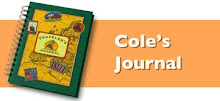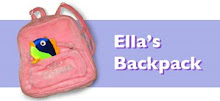
Now it’s time to head back to Germany. We flew into Brussels on Wizz Air (the kids got a chuckle about that) and drove straight to Köln (or Cologne in English) to spend the night. In the morning we found a Mailboxes, Etc. to ship out the Eastern Europe treasures we’d collected, and then headed into town for a quick visit of the famous Köln Cathedral. After that it was on to the Schwalm region of Germany, located approximately an hour west of Frankfurt. This is the land of my Staehling ancestors. We’ve traced our family tree back to the 16th century and found that the first several generations all came from a village in this region called Loshausen. A dozen or so villages make up the Schwalm of which Loshausen is one. The villages are all very well manicured with cute farmhouses and half-timbered homes. The rest of the area is full of lush rolling hills and dotted with fields of yellow flowers.
We set up plans to meet four of the Stähling families in the area that I made contact with ahead of time. By the way, “ä” in German is pronounced like “ae” in English, thus the different spelling with our German relatives. We arrived town a little early and checked into a farm stay full of animals and playgrounds. Since the kids were set, I decided to do a little exploration of my own. I started at the local tourist office, hoping to get directions to the Loshausen cemetery. As I was visiting, the curator of the local history museum happened to stroll by. They summoned him in and he offered to personally take me to the church and cemetery. We stopped off for a key to the church and then I got the full history lesson about the area. While visiting the church I asked if it was for sure the right one. Were there other churches in town? He told me in this area there is one religion – Protestant. “One religion, one church”. The cemetery was not the jackpot I had hoped for though, as the earliest graves were barely from the 1800’s. I later learned that in Germany a gravesite is purchased for 30 years. After that time expires, someone must renew the lease or the plot and headstone get recycled. The bones are typically retired to a crypt, but that too can vary by village.
Our first visit was with Kai and Denise Stähling, a young couple in Loshausen. Kai and I traced our roots back about four generations before the branches in our family tree went off in different directions. We had a great visit and he showed us one of the houses down the street that has been occupied by Stählings for the last few centuries. Our next stop was just up the road in Schwalmstadt. Armin and his wife Angelika also rolled out the red carpet. They had a beautiful home overlooking the valley and we arrived just before sunset. We visited about all kinds of things, from village culture and traditions to life in America. He also told us that while there are a few more Stählings scattered throughout Germany, they all originate here. They have a 22 year-old daughter studying in Aachen (whom we’ll probably see when we visit that town later in our trip) and a 17 year-old son who arrived later after returning from English lessons. He even broke out his saxophone when he got home and gave the kids a little concert. They also gave us a beautiful hand-embroidered linen, created by one of the local artisans.
After a quick night’s sleep it was on to relative number three. Gerd and his wife Irene live in Willingshausen, again just down the road. They also have Johanna age 7, and Jonathon age 4. When we arrived, the kids were already at school so Irene arranged a visit for us. Johanna’s teacher was fluent in English and offered to take the kids for the rest of the day. You didn't need to twist our arm and off we went. It was the first time Angie and I had been alone since we left on our trip. But while the kids were in school, Angie and I went on to visit relative number four. Walter and Martha were an older couple who were so excited to have relations from America. He spoke no English and just rattled off his German like we understood everything he said. Finally a friend of his came by that worked as our interpreter. While we couldn’t confirm where our family tree crossed, he was bound and determined to figure it out and get back to me. Again he filled us with snacks, gifts, and treats for the kids. Back to school, the kids were talking a mile a minute about their day. They participated in math, weaving, gym, and English. The teacher mentioned that the other students were very excited to put their English skills to the test, and asked our kids all kinds of questions. After school we all headed back to Gerd’s for a big German lunch, a lunch dominated by the mountain of regional sausages and breads. The saving grace for Angie was that Gerd was a bit of a wine connoisseur. A great glass of wine was a welcome relief from all the German beer. After lunch we took a tour of Gerd’s office furniture factory and then headed down to his farm. While he leases out the farming duties to someone else, he had an old John Deere tractor that he was dying for an excuse to pull out of the barn. So we loaded up the trailer and headed down the road.
Everyone was so nice that once again our only regret was not having more time. This truly was a special couple of days for the family. We left with lots of encouragement for a quick return trip. I can't promise when that will be, but I can promise it will be for a longer stay!
A "sweet" stop in Köln.

Kai & Denise

Armin, Angelika & Yannick

Some down time at our farm stay.

Study time at the German school.

Walter & Martha

Gerd, Irene, Johanna & Jonathon

Cole in front of one of Gerd's trucks.







































































